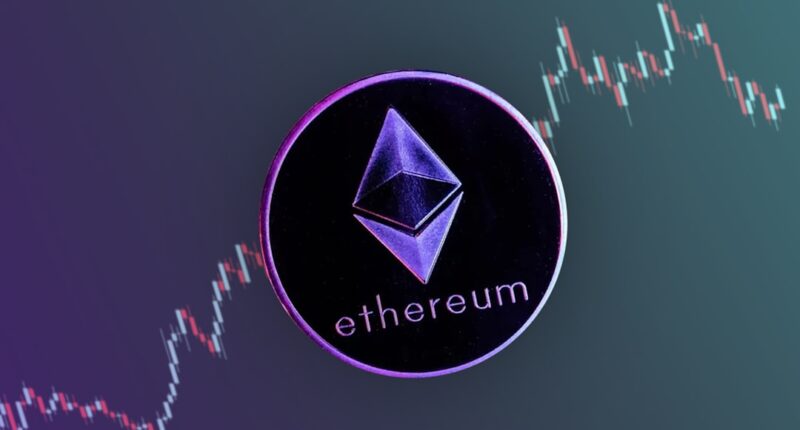Ethereum, launched in 2015 by Vitalik Buterin and a team of developers, represents a significant evolution in the blockchain landscape. Unlike Bitcoin, which primarily serves as a digital currency, Ethereum is a decentralized platform that enables developers to build and deploy smart contracts and decentralized applications (dApps). This flexibility has positioned Ethereum as a foundational layer for a myriad of innovations across various sectors, from finance to art.
The underlying technology of Ethereum is its blockchain, which is a distributed ledger that records all transactions in a secure and transparent manner. This decentralized nature ensures that no single entity has control over the network, fostering trust among users. The Ethereum network operates on its native cryptocurrency, Ether (ETH), which is used to facilitate transactions and power applications on the platform.
The introduction of the Ethereum Virtual Machine (EVM) allows developers to write code in various programming languages, making it accessible to a broader audience. As Ethereum continues to evolve, particularly with the transition to Ethereum 2.0 and the implementation of proof-of-stake (PoS), it aims to address scalability issues and reduce energy consumption. This transition is crucial as it seeks to enhance the network’s efficiency while maintaining its core principles of decentralization and security.
Key Takeaways
- Ethereum is a decentralized platform that enables developers to build and deploy smart contracts and decentralized applications (DApps).
- DApps and smart contracts on Ethereum allow for the automation of complex processes and the creation of new types of digital assets.
- Ethereum has the potential to democratize access to financial services by providing a platform for peer-to-peer lending, crowdfunding, and microfinance.
- The use of Ethereum in supply chain management can increase transparency, traceability, and efficiency in the movement of goods and services.
- Tokenization of assets and ownership on Ethereum allows for the representation of real-world assets as digital tokens, enabling fractional ownership and increased liquidity.
Decentralized Applications and Smart Contracts
At the heart of Ethereum’s appeal lies its ability to support decentralized applications (dApps) and smart contracts. Smart contracts are self-executing contracts with the terms of the agreement directly written into code. They automatically enforce and execute contractual agreements when predetermined conditions are met, eliminating the need for intermediaries.
This capability has revolutionized various industries by streamlining processes and reducing costs associated with traditional contract enforcement. For instance, in the real estate sector, smart contracts can facilitate property transactions by automating the transfer of ownership once payment is confirmed. This not only accelerates the buying process but also minimizes the risk of fraud, as all transactions are recorded on the blockchain.
Similarly, in supply chain management, dApps can provide real-time tracking of goods, ensuring transparency and accountability at every stage of production and distribution. The versatility of dApps extends beyond these examples; they can be utilized in gaming, healthcare, and even social media platforms, showcasing the vast potential of Ethereum’s infrastructure.
Democratizing Access to Financial Services

One of the most transformative aspects of Ethereum is its role in democratizing access to financial services through decentralized finance (DeFi). DeFi leverages blockchain technology to recreate traditional financial systems—such as lending, borrowing, and trading—without intermediaries like banks or brokers. This shift empowers individuals who may have been excluded from conventional banking systems due to geographical, economic, or regulatory barriers.
For example, platforms like Aave and Compound allow users to lend their cryptocurrencies in exchange for interest or borrow assets by providing collateral. These services operate on smart contracts that ensure transparency and security while offering users greater control over their financial assets. Furthermore, DeFi protocols often provide higher interest rates compared to traditional savings accounts, attracting users seeking better returns on their investments.
The rise of DeFi has not only expanded financial inclusion but has also sparked innovation in financial products, leading to new ways for individuals to manage their wealth.
Impact on Supply Chain Management
| Metrics | Data |
|---|---|
| Inventory Levels | Decreased due to disruptions |
| Lead Time | Increased due to transportation delays |
| Supplier Performance | Impacted by production shutdowns |
| Cost of Goods Sold | Rising due to supply chain constraints |
The integration of Ethereum into supply chain management has the potential to enhance transparency, traceability, and efficiency across various industries. By utilizing smart contracts and dApps, businesses can create immutable records of every transaction within their supply chains. This level of transparency allows stakeholders to track products from their origin to the end consumer, significantly reducing the risk of fraud and ensuring compliance with regulations.
For instance, companies like VeChain are leveraging Ethereum’s blockchain to provide real-time data on product authenticity and quality. In the food industry, this means consumers can verify the source of their food products, ensuring they are safe and ethically sourced. Similarly, in the luxury goods market, blockchain technology can help combat counterfeiting by providing verifiable proof of authenticity for high-end items.
The ability to trace products throughout their lifecycle not only builds consumer trust but also enables companies to respond swiftly to recalls or quality issues.
Tokenization of Assets and Ownership
Tokenization refers to the process of converting physical or digital assets into tokens that can be traded on a blockchain. Ethereum’s infrastructure facilitates this process by allowing assets such as real estate, art, or even intellectual property to be represented as tokens on its network. This innovation opens up new avenues for investment and ownership, making it easier for individuals to buy fractional shares in high-value assets.
For example, platforms like RealT enable investors to purchase fractional ownership in real estate properties through tokenization. This democratizes access to real estate investment, allowing individuals who may not have sufficient capital to invest in property markets traditionally dominated by wealthy investors. Similarly, in the art world, platforms like Myco enable artists to tokenize their works, allowing them to sell shares of their art pieces while retaining ownership rights.
This not only provides artists with new revenue streams but also allows collectors to invest in art without needing substantial upfront capital.
Decentralized Autonomous Organizations (DAOs)

Decentralized Autonomous Organizations (DAOs) represent a novel governance structure enabled by blockchain technology. DAOs operate through smart contracts that define rules and execute decisions based on collective agreement among members. This model fosters a more democratic approach to organizational governance, as decisions are made transparently and without centralized control.
For instance, MakerDAO is a prominent example of a DAO that governs the DAI stablecoin ecosystem. Members participate in governance by voting on proposals related to risk management and protocol upgrades using their MKR tokens. This decentralized decision-making process empowers users and aligns incentives with the health of the ecosystem.
DAOs can be applied across various sectors, from venture capital funding to community-driven projects, allowing stakeholders to collaborate effectively while maintaining autonomy.
The Role of Ethereum in NFTs and Digital Art
Ethereum has become synonymous with non-fungible tokens (NFTs), which represent unique digital assets verified through blockchain technology. NFTs have gained immense popularity in recent years, particularly in the realm of digital art, where artists can tokenize their creations and sell them directly to collectors without intermediaries. This shift has transformed how artists monetize their work and engage with their audiences.
Platforms like OpenSea and Rarible have emerged as marketplaces for buying and selling NFTs, enabling artists to reach global audiences while retaining ownership rights over their creations. The ability to embed royalties into smart contracts ensures that artists receive a percentage of sales whenever their work is resold, creating ongoing revenue streams that were previously unattainable in traditional art markets. Moreover, NFTs have expanded beyond art into music, gaming, and virtual real estate, showcasing Ethereum’s versatility as a platform for digital ownership.
Potential Challenges and Future Outlook
Despite its transformative potential, Ethereum faces several challenges that could impact its future growth and adoption. Scalability remains a significant concern; as more users join the network and demand for dApps increases, transaction speeds can slow down, leading to higher fees during peak times. The transition to Ethereum 2.0 aims to address these issues by implementing proof-of-stake consensus mechanisms and sharding technology to enhance throughput.
Additionally, regulatory scrutiny poses another challenge for Ethereum’s ecosystem. As governments worldwide grapple with how to regulate cryptocurrencies and blockchain technologies, uncertainty can hinder innovation and deter potential investors. Striking a balance between fostering innovation while ensuring consumer protection will be crucial for Ethereum’s long-term success.
Looking ahead, Ethereum’s role as a foundational layer for decentralized applications and financial services is likely to expand further as more industries recognize its potential. The ongoing development of Layer 2 solutions aims to enhance scalability while maintaining security and decentralization principles. As Ethereum continues to evolve and adapt to emerging challenges, it remains at the forefront of blockchain innovation, shaping the future of technology across various sectors.
In exploring the transformative potential of Ethereum in democratizing the internet economy, it’s essential to consider the broader implications of blockchain technology on various sectors. An insightful article that complements this discussion is available on ETH News, which delves into the foundational aspects of Ethereum and its role in reshaping digital interactions. For a deeper understanding, you can read more about these foundational aspects in the article titled “Hello World” on ETH News by following this link. This piece provides a comprehensive overview of how Ethereum’s decentralized framework is paving the way for more inclusive and equitable economic opportunities online.
FAQs
What is Ethereum?
Ethereum is a decentralized platform that enables developers to build and deploy smart contracts and decentralized applications (DApps). It uses blockchain technology to create and run these applications, which can be used for a variety of purposes, including financial transactions, voting systems, and supply chain management.
How does Ethereum impact the internet economy?
Ethereum has the potential to democratize the internet economy by providing a platform for decentralized applications that can operate without the need for intermediaries. This can reduce costs, increase transparency, and provide greater access to financial services for people around the world.
What are some examples of Ethereum’s impact on the internet economy?
Some examples of Ethereum’s impact on the internet economy include the rise of decentralized finance (DeFi) applications, which provide financial services such as lending, borrowing, and trading without the need for traditional financial institutions. Additionally, Ethereum has enabled the creation of non-fungible tokens (NFTs), which have revolutionized the digital art and collectibles market.
What are the potential benefits of Ethereum for the internet economy?
The potential benefits of Ethereum for the internet economy include increased financial inclusion, reduced transaction costs, greater transparency and security, and the ability to create new business models and revenue streams through decentralized applications.
What are some challenges or limitations of Ethereum in democratizing the internet economy?
Some challenges and limitations of Ethereum in democratizing the internet economy include scalability issues, regulatory uncertainty, and the environmental impact of its energy-intensive mining process. Additionally, the complexity of smart contracts and decentralized applications can present barriers to adoption for some users and businesses.





